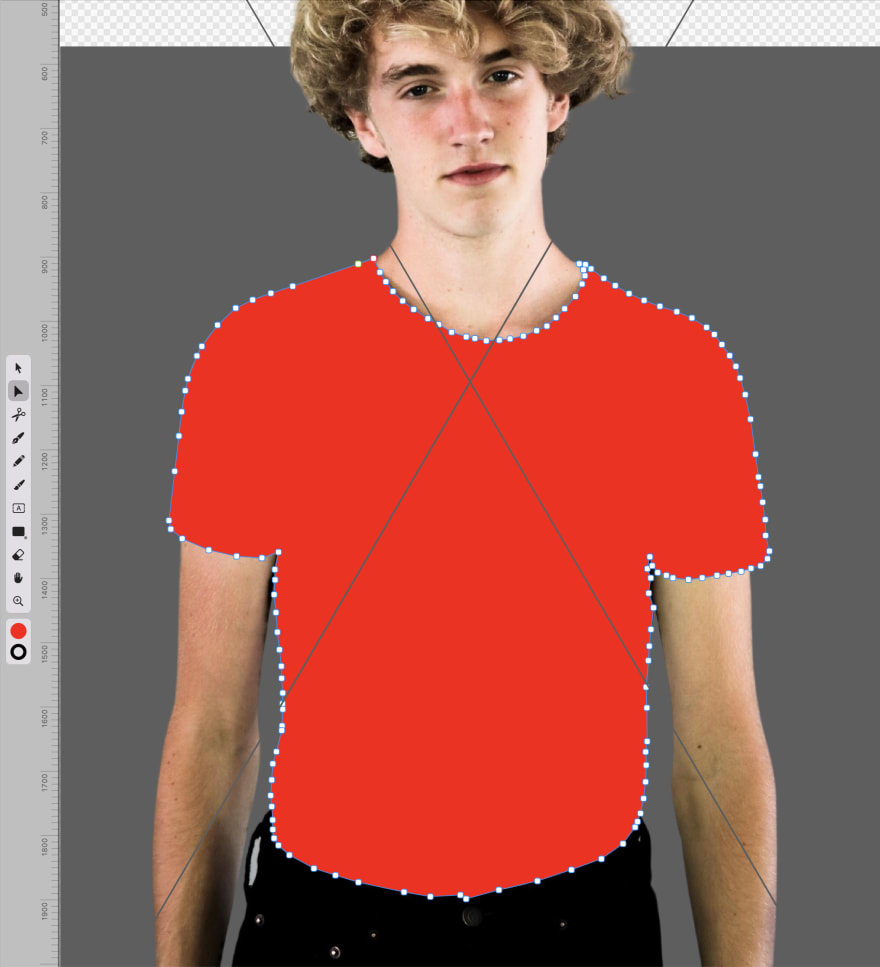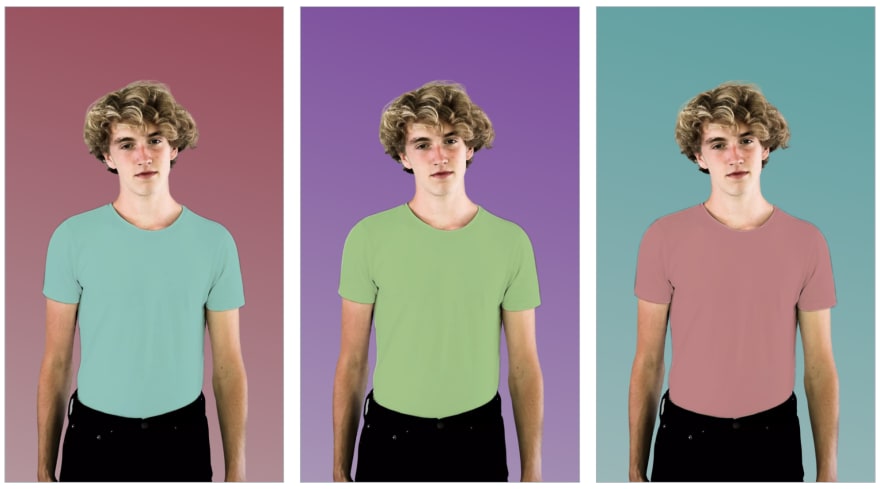An Interest In:
Web News this Week
- March 25, 2024
- March 24, 2024
- March 23, 2024
- March 22, 2024
- March 21, 2024
- March 20, 2024
- March 19, 2024
Masking and coloring product images using CSS and SVG
If you have a product that's available in several colors, it can be cumbersome and expensive to take pictures of each variant.
Luckily, we can use CSS and SVG to mask a single image.
In this tutorial, we'll create a mask for the "product"-part of an image, so we can replace it's color. We'll also remove the background of the image, so we can add our own.
Initial steps
1.
Find a useable image. I searched for "white t-shirt" on pexels.com, and found this image:
2.
Then I removed the background using remove.bg (you get 1 free credit per month, so use it wisely!)
3.
I converted this image to webp, using an online converter.
4.
Then I opened the converted image in Vectornator, a great, free vector-editor and added a path using the Pen tool (for clarity, I added a layer behind the image with a solid background-color):
5.
Finally, I exported the mask to svg, and cleaned it up using SVGOMG.
Phew! A lot of steps, but the only time-consuming step is the "masking" in Vectornator. If you need to do this for a lot of products, consider hiring a specialist on Fiverr or similar.
Now for the fun part! First, we need some markup:
<figure> <img src="image.webp" alt="Text" /> <div></div></figure>For the figure-tag, we'll add a few CSS Custom Properties, to set the t-shirt-color in hsl():
figure { --h: 168; --s: 40%; --l: 65%;}We want to set the background to the contrast-color of the t-shirt-color. That equals rotating the hue (--h) 180 degrees.
To make it a bit more interesing, we create a gradient with subtracted saturation (20%) for the first color, and subtracted lightness (20%) for the second:
figure {--_bg: linear-gradient(15deg, hsl(calc(var(--h) + 180), calc(var(--s) - 20%), var(--l)), hsl(calc(var(--h) + 180), var(--s), calc(var(--l) - 20%))); background: var(--_bg);}Let's try it out, with different --h-values:
Cool - now, let's color the t-shirt using a mask.
Enabling the mask
div { background-color: hsl( var(--h), var(--s), var(--l) ); inset: 0; mask-image: url('mask.svg'); mask-position: center; mask-repeat: no-repeat; mask-size: 100%; mix-blend-mode: multiply; position: absolute;}Note: For Chrome and Safari, you need to add
-webkit-prefixes to all themask-properties.
Cool! Play around in Dev Tools with the three colors variables: --h, --s and --l.
A note on the SVG-mask
To be honest, I'm not very good at masking and I've only used Vectornator a couple of times.
To make up for my masking-skills, I decided to make the mask a bit blurry, by adding a Gaussian blur to the svg:
<filter id="f1" x="0" y="0"> <feGaussianBlur in="SourceGraphic" stdDeviation="3" /></filter>And then, in the path itself:
<path filter="url(#f1)" ...>And that's it!
Here's a Codepen with added controls, so you can play around with the hsl-values:
Original Link: https://dev.to/madsstoumann/masking-and-coloring-product-images-using-css-and-svg-2eil
Dev To
 An online community for sharing and discovering great ideas, having debates, and making friends
An online community for sharing and discovering great ideas, having debates, and making friendsMore About this Source Visit Dev To





